Xinhao Yang
Contribution of soundscape appropriateness to soundscape quality assessment in space: a mediating variable affecting acoustic comfort
Oct 01, 2024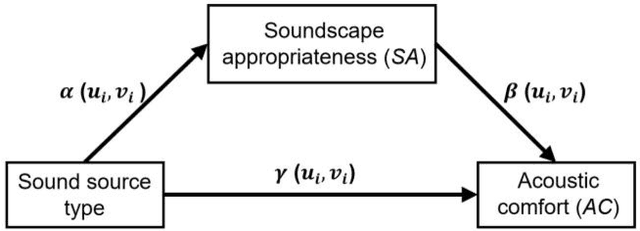
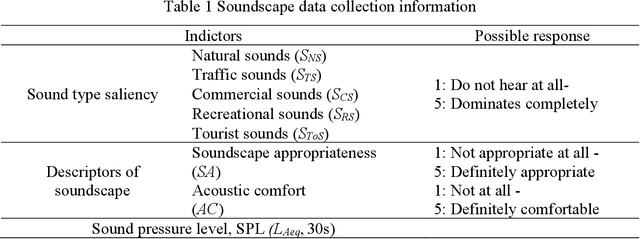
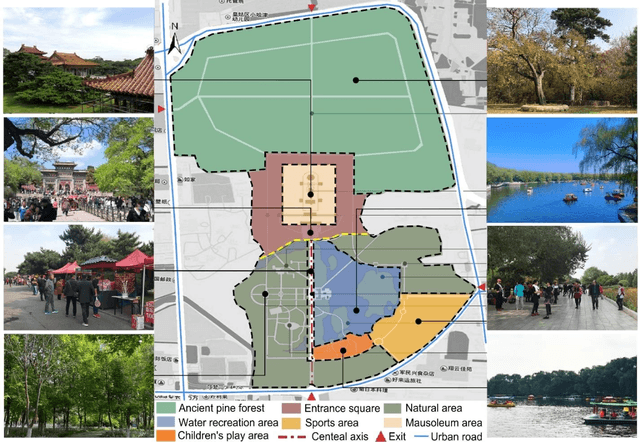
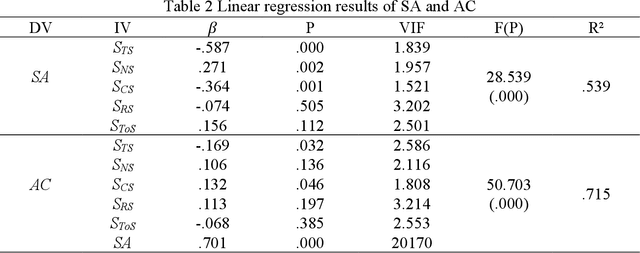
Abstract:Soundscape appropriateness (SA) provides supplemental information on the matching degree between auditory information and the surrounding scene in soundscape perception. This indicator has been integrated into the standard ISO process for collecting soundscape data, forming a component of the sound quality assessment questionnaire. However, its role in soundscape quality assessment has not been fully understood. Herein, we present the findings from soundscape data collected from Beiling Park in Shenyang, China. A method was developed that integrates mediation effect models with multiscale geographically weighted regression (MGWR) models to explore the mediating role of SA in the impact of sound source types on soundscape quality, as well as the spatial heterogeneity of this mediation effect. The results confirm that SA does mediates the influence of sound source types on acoustics comfort (AC). Specifically, natural sounds (indirect effect / total effect = 0.19 / 0.19), traffic sounds (indirect effect / total effect = -0.46 / -0.65), and commercial sounds (indirect effect / total effect = -0.25 / -0.12) impact the perception of AC by either enhancing or reducing SA. Moreover, the relationships among variables depicted in this model demonstrate spatial heterogeneity, demonstrating that in urban open spaces with complex constructures, local spatial models may be needed for soundscape assessment. The research reaffirms the significance of SA in urban open spaces. In terms of practical implications for urban and landscape planners, when sound sources cannot be controlled or altered, coordinating between the sound and the surrounding environment through landscape optimisation could also improve the quality of the soundscape through enhancing SA and help achieve the goal of creating healthy urban open spaces.
A rapid approach to urban traffic noise mapping with a generative adversarial network
May 21, 2024
Abstract:With rapid urbanisation and the accompanying increase in traffic density, traffic noise has become a major concern in urban planning. However, traditional grid noise mapping methods have limitations in terms of time consumption, software costs, and a lack of parameter integration interfaces. These limitations hinder their ability to meet the need for iterative updates and rapid performance feedback in the early design stages of street-scale urban planning. Herein, we developed a rapid urban traffic noise mapping technique that leverages generative adversarial networks (GANs) as a surrogate model. This approach enables the rapid assessment of urban traffic noise distribution by using urban elements such as roads and buildings as the input. The mean values for the mean squared error (MSE) and structural similarity index (SSIM) are 0.0949 and 0.8528, respectively, for the validation dataset. Hence, our prediction accuracy is on par with that of conventional prediction software. Furthermore, the trained model is integrated into Grasshopper as a tool, facilitating the rapid generation of traffic noise maps. This integration allows urban designers and planners, even those without expertise in acoustics, to easily anticipate changes in acoustics impacts caused by design.
FlightLLM: Efficient Large Language Model Inference with a Complete Mapping Flow on FPGAs
Jan 09, 2024
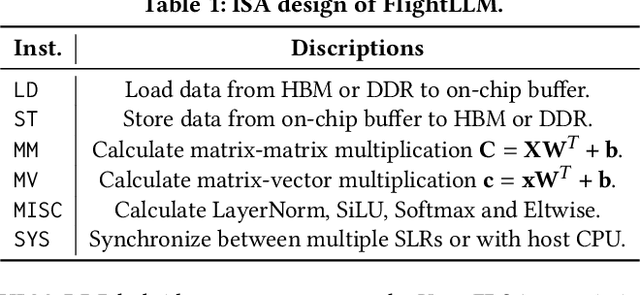


Abstract:Transformer-based Large Language Models (LLMs) have made a significant impact on various domains. However, LLMs' efficiency suffers from both heavy computation and memory overheads. Compression techniques like sparsification and quantization are commonly used to mitigate the gap between LLM's computation/memory overheads and hardware capacity. However, existing GPU and transformer-based accelerators cannot efficiently process compressed LLMs, due to the following unresolved challenges: low computational efficiency, underutilized memory bandwidth, and large compilation overheads. This paper proposes FlightLLM, enabling efficient LLMs inference with a complete mapping flow on FPGAs. In FlightLLM, we highlight an innovative solution that the computation and memory overhead of LLMs can be solved by utilizing FPGA-specific resources (e.g., DSP48 and heterogeneous memory hierarchy). We propose a configurable sparse DSP chain to support different sparsity patterns with high computation efficiency. Second, we propose an always-on-chip decode scheme to boost memory bandwidth with mixed-precision support. Finally, to make FlightLLM available for real-world LLMs, we propose a length adaptive compilation method to reduce the compilation overhead. Implemented on the Xilinx Alveo U280 FPGA, FlightLLM achieves 6.0$\times$ higher energy efficiency and 1.8$\times$ better cost efficiency against commercial GPUs (e.g., NVIDIA V100S) on modern LLMs (e.g., LLaMA2-7B) using vLLM and SmoothQuant under the batch size of one. FlightLLM beats NVIDIA A100 GPU with 1.2$\times$ higher throughput using the latest Versal VHK158 FPGA.
 Add to Chrome
Add to Chrome Add to Firefox
Add to Firefox Add to Edge
Add to Edge